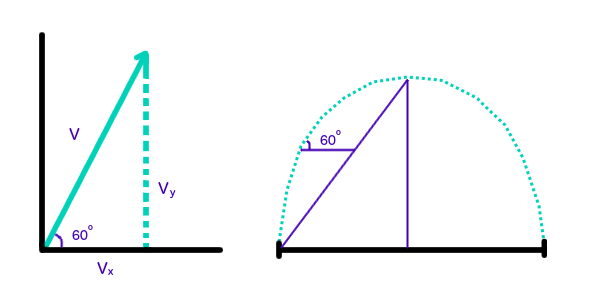A projectile is shot at an angle of #pi/3 # and a velocity of # 67 m/s#. How far away will the projectile land?
1 Answer
The projectile will land
Explanation:
To determine the range of the projectile, we can break the velocity up into its x- and y-components, then use kinematics to solve for the horizontal distance traveled by the projectile, i.e. its range.
We can start by drawing a diagram of the motion.

Here I have shown two schematic representations. Using basic trigonometry, we can determine the x- and y-components of the velocity, where the initial velocity becomes the hypotenuse of the right triangle (r).
Note: I have converted the angle from radians to degrees.
We can now use kinematics to solve for the range of the projectile.
We have all of the information necessary to solve for the projectile's flight time, which we can do using y-components of the motion. We can then take this value for
Assuming the projectile has the same initial and final altitude, the rise and fall times of the projectile are equal, i.e.
We can solve for the rise time of the projectile using
Solving for Δt,
The total flight time is equal to twice the rise time, thus
We can now use this value to solve for the range of the projectile. Because there is no horizontal acceleration in projectile motion,
Solving for

